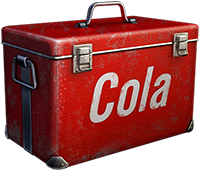| JAN. 02 | Elements of the 6th SS-Gebirgs-Division "Nord" (German Mountain Division "Nord") begin arriving to help the German offensive. These are seen as the most important source of German reinforcement, as they are both battle hardened and well equipped for the terrain and weather. |
| JAN. 03 | With the German assault in full swing, French forces demand that Strasbourg be well defended. Understanding the French plight, Eisenhower agrees. |
| JAN. 04 | Hitler admits that the Ardennes offensive is a failure. He orders German forces from the Eastern Front to also attack over the Rhine. |
| JAN. 05 | German forces establish a bridgehead over the Rhine, north of Strasbourg near Gambsheim. |
| JAN. 06 | Operation Nordwind shifts focus from Bitche to Hagenau. The 21st Panzer Division and 25th Panzergrenadier Division, which are severely diminished, begin to move towards Hagenau Forest. |
| JAN. 07 | The first phase of Operation Nordwind is complete, with mixed results and little to show in the sense of victory for the Germans. |
| JAN. 08 | U.S. 12th Armored Division begins initial attacks against the Gambsheim bridgehead but is pushed back after a day of fighting. |
| JAN. 09 | A week-long battle begins between German forces and the U.S. 14th Armored Division over control of Hatten-Rittershoffen and the gateway through the Hagenau Forest. |
| JAN. 10 | Elements of the 315th Infantry arrive and begin to reinforce the American attacks on the village of Hatten. These are promptly beaten back by the German forces. |
| JAN. 11 | German forces attempt to circumvent the stalemate at the village of Hatten by taking Rittershoffen to the west. Both locations turn into killing fields, with German and U.S. elements engaged in fierce fighting, but each unable to effectively overwhelm the other. |
| JAN. 12 | While waiting for further troops to be committed, German and U.S. forces at Hatten-Rittershoffen attack over the "pool table," a wide-open space that becomes a killing field. |
| JAN. 13 | Reinforcements from both sides begin to arrive at Hatten-Rittershoffen. These elements boost the fighting power of the forces at both locations. |
| JAN. 14 | The Red Army attacks central Germany, forcing German divisions away from the effort on the Rhine. |
| German forces at Hatten-Rittershoffen are able to beat and push back the American reinforcements. |
| JAN. 15 | The fighting at Hatten-Rittershoffen intensifies. German Flammpanzer 38(t) tanks are sent in to burn the U.S. infantry out of their holdings in cellars and dug-in positions. |
| JAN. 16 | The U.S. 12th Armored Division resumes attacking the German-held Gambsheim bridgehead near Herrlisheim. Through heavy fighting, the U.S. 12th Armored Division is beaten back. |
| JAN. 17 | The 10th SS Panzer Division joins the fighting at Herrlisheim. With their firepower, two U.S. battalions are completely wiped out. |
| JAN. 18 | In the predawn hours, the 17th Armored Infantry Battalion positions in Herrlisheim are completely overrun and the battalion commander is captured. |
| JAN. 19 | Although attempts are made to dislodge the Germans at Herrlisheim, the German bridgehead remains. The 10th SS Panzer Division is shifted to the Hagenau front. |
| JAN. 20 | The 1st French Army launches the opening phase of Operation Cheerful with the goal of reducing the Colmar Pocket. |
| JAN. 21 | The 3rd Division of the U.S. XXI Corps begins attacking towards Colmar. |
| JAN. 22 | German military forces gather on the Alsatian plain but are unable to push past the Moder River line. The French II Corps begins attacking the Erstein bulge on the northwestern portion of the Colmar Pocket. |
| JAN. 23 | The U.S. 30th Infantry Regiment of the 3rd Division is able to push through to the Ill River, where they find a small bridge. There, they engage German forces but are beaten back, with some units routed. |
| JAN. 24 | The next day, German and U.S. forces clash again at the bridge over the Ill River. The battle shifts back and forth until the U.S. 15th Infantry Regiment (with tank support) finally pushes the Germans back. |
| JAN. 25 | Hitler calls off the German offensive. This marks the end of major fighting in Operation Nordwind. Battle lines begin to return to roughly their positions prior to the start of the operation. |








